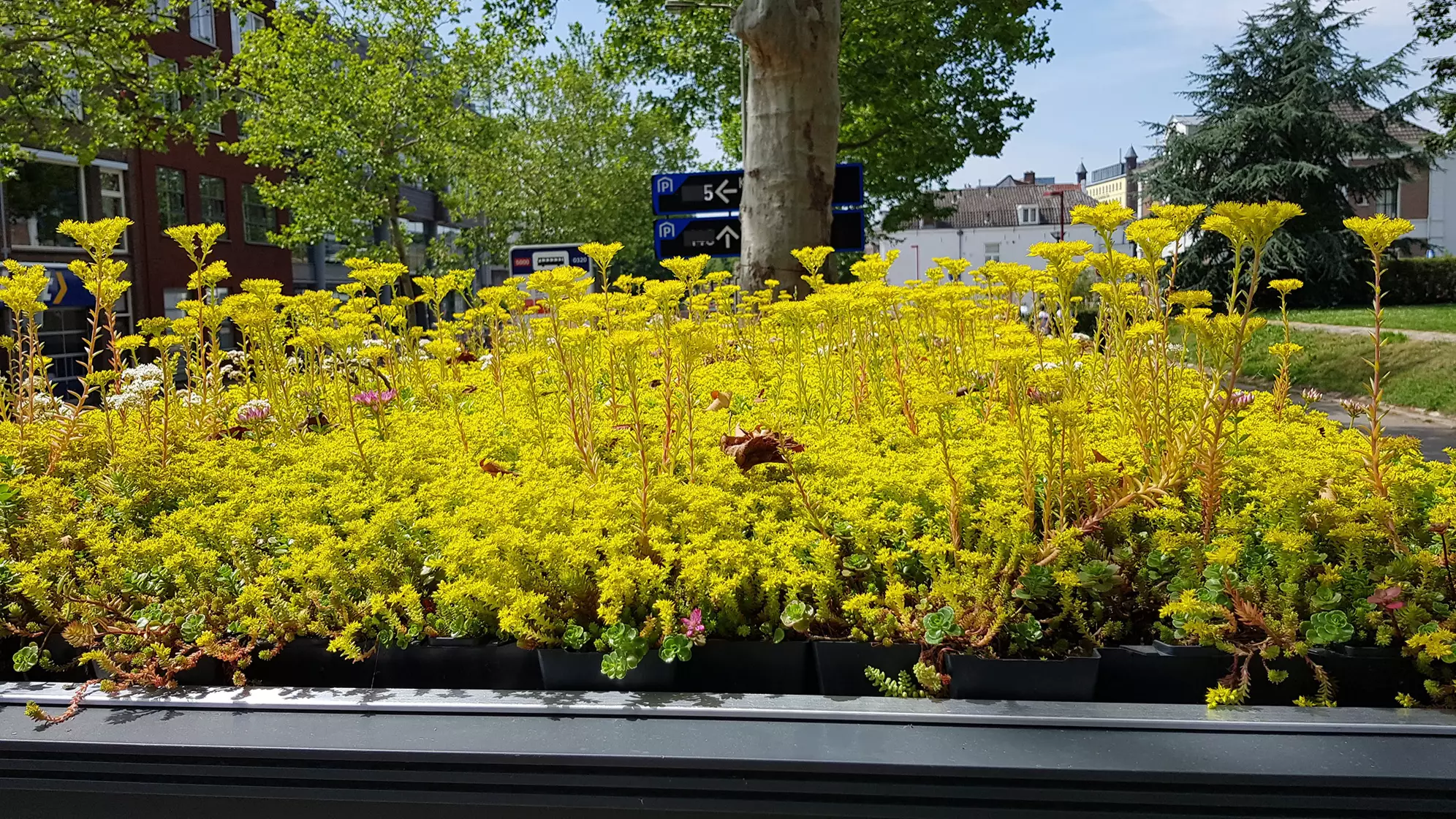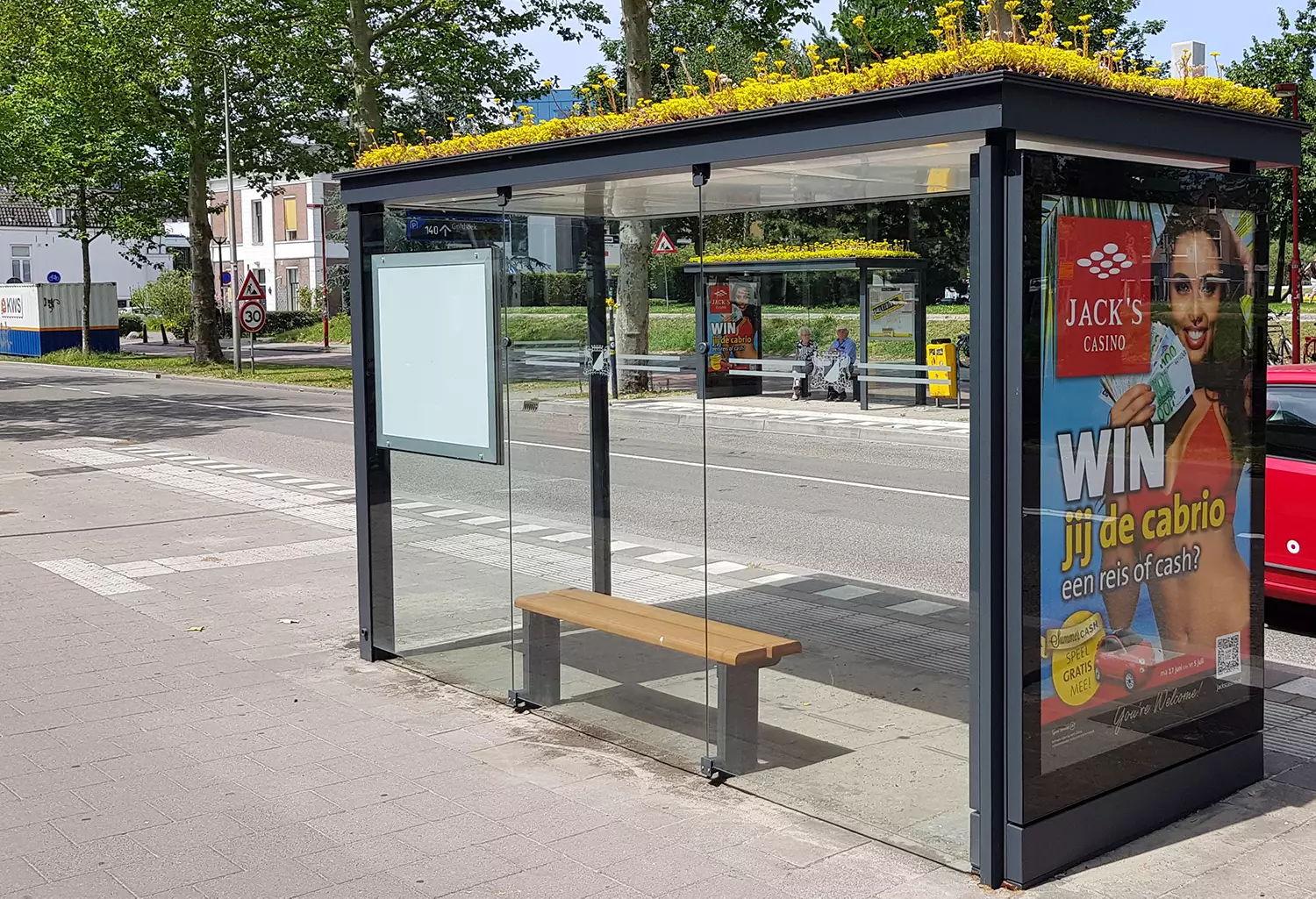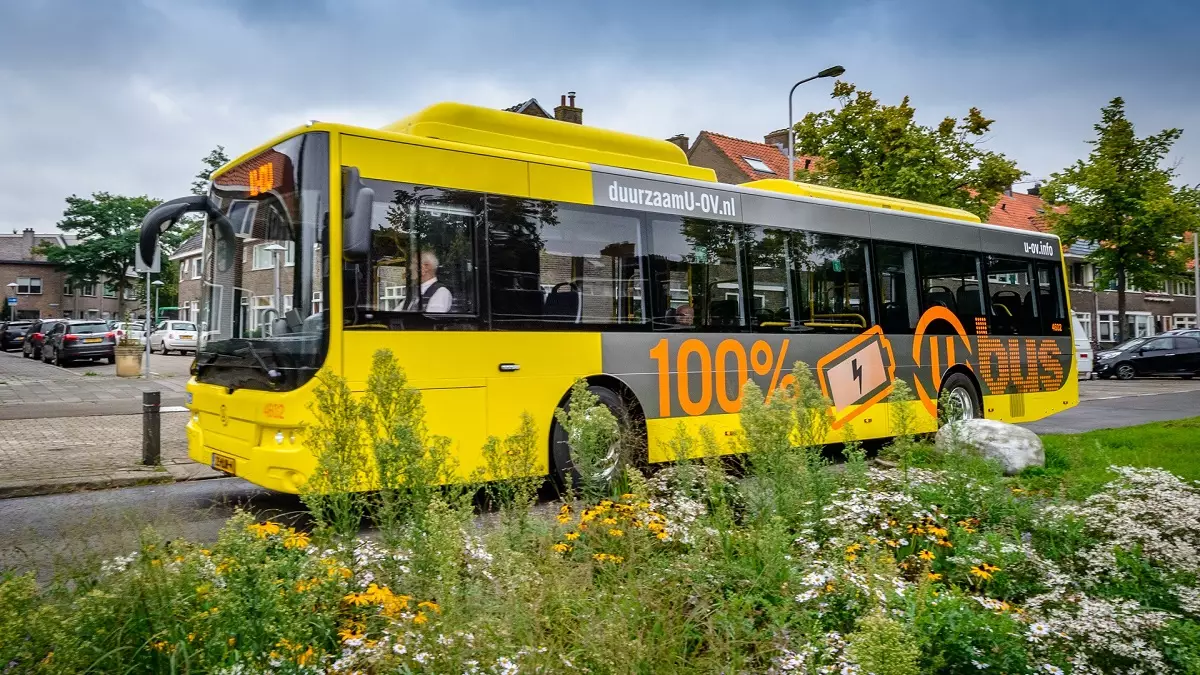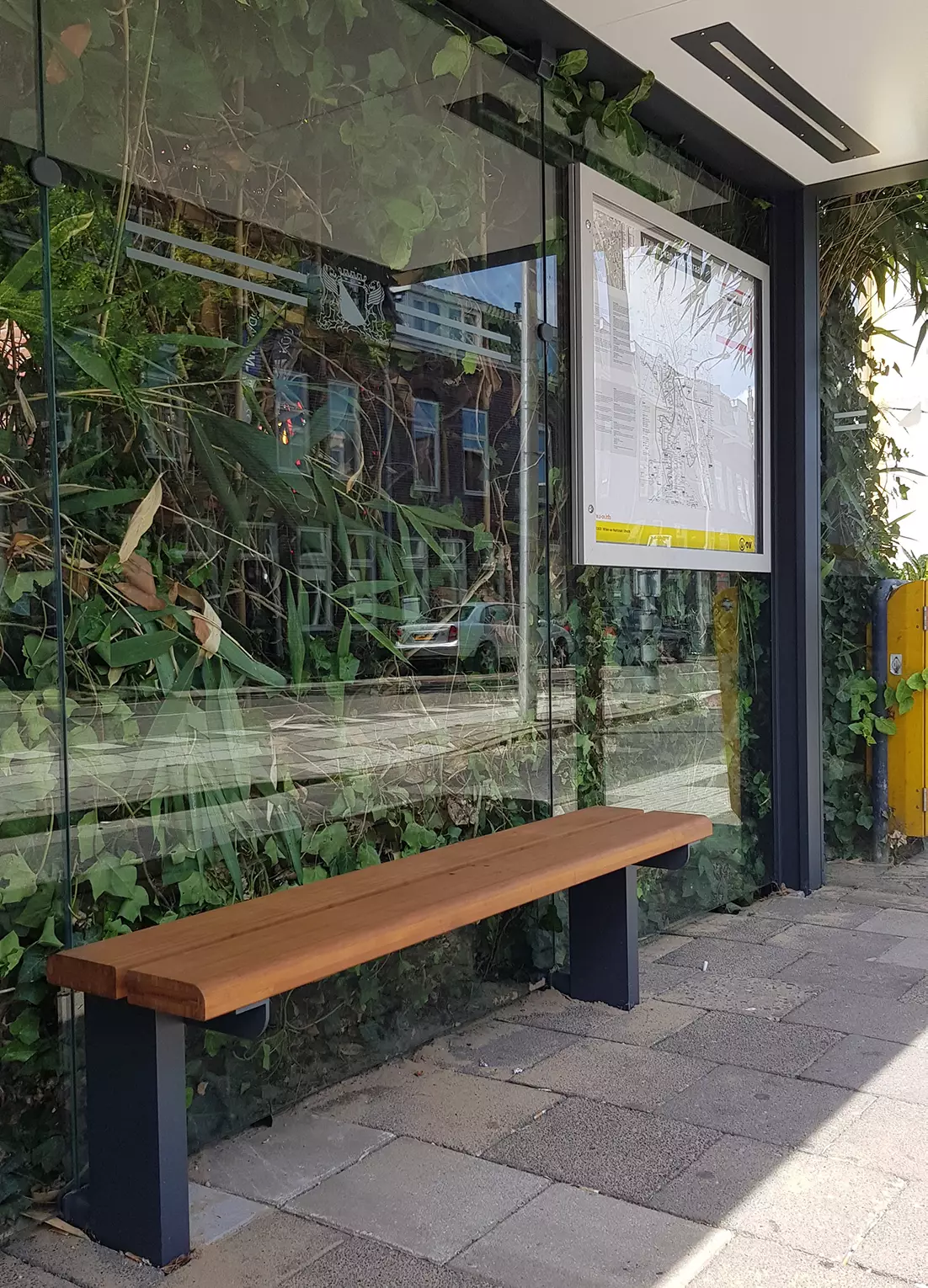
A city in the Netherlands has covered the tops of hundreds of bus stops in flowers in plants as a gift to honeybees.
The city of Utrecht has covered the roofs of 316 of its bus stops in sedum plants to encourage the pollinating insects to visit.
It's not just good for the bees, either. The plants atop the bus shelters also capture fine dust and particles from the air and trap rainwater.
It's a pretty worthwhile move all around, in short.

But the people behind the scheme haven't stopped there.
The bus shelters are maintained by council employees who drive electric vehicles, and have all been fitted with environmentally friendly solar-powered LED lights and fitted with bamboo benches for passengers to take the load off while they wait for their bus.
As we all should know by now, we need to take urgent action to save the environment, the planet, and - by extension - ourselves.
Advert
This is just one small way that the city of Utrecht has come up with to make a difference. As well as the shelters, there are plans to introduce 55 electric buses by the end of 2019 with the aim of 'completely clean public transport' by 2028.
Fittingly, the energy that will be used to power Utrecht's new green-fuelled buses will come from the many windmills in the Netherlands.
Well, the country is famous for them.
These latest measures are part of a larger scheme run by the city to clean up its act.
As part of that scheme, residents living in the city can apply for funding to turn the roof of their own house into a green roof to attract insects, amongst other things.

This approach taken by Utrecht is backed up by a whole heap of science, by the way. Just recently a new study found that we could combat climate change by planting a new forest the size of the United States.
The Crowther Lab in Switzerland discovered that there is actually a lot more space available for tree-planting than we previously thought.
If we could plant 1 billion hectares of trees - not exactly a small task, to be fair - we'd reduce carbon dioxide in the atmosphere by 25 percent.
Professor Tom Crowther - something of a big player down at the Crowther Lab - said: "We all knew restoring forests could play a part in tackling climate change, but we had no scientific understanding of what impact this could make.

"Our study shows clearly that forest restoration is the best climate change solution available today and it provides hard evidence to justify investment.
"However, it will take decades for new forests to mature and achieve this potential.
"It is vitally important that we protect the forests that exist today, pursue other climate solutions, and continue to phase out fossil fuels from our economies in order to avoid dangerous climate change."
Featured Image Credit:Topics: World News, Interesting, Animals